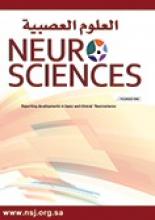Abstract
OBJECTIVE: The main objective of this study is to use the method of complex demodulation combined with posture entrainment protocol (changing from supine to standing position) to characterize the autonomic dysfunction before and after hemodialysis session in patients with chronic renal failure.
METHODS: Twenty patients maintained on hemodialysis for an average 18 months were studied. All patients were dialysed regularly three times a week, each time for 4 hours. Electroencephalograms were measured for ureamic patients before and after hemodialysis. Heart rate variability signals derived from electroencephalograms were recorded during the supine and standing positions. Complex modulation method is employed to investigate the sympathetic and parasympathetic activity before and after hemodialysis.
RESULTS: It is possible by using experimental posture entrainment protocol (supine and standing positions) combined with the method of complex demodulation to produce the average low and high frequency response of heart rate variability mediated by autonomic nervous system for twenty uraemic patients before and after hemodialysis sessions in both supine and standing position. The high amplitude of low and high frequency response of heart rate variability of twenty uraemic patients on standing and poststanding after hemodialysis sessions indicates the improvement of autonomic function compared with the same patients before hemodialysis sessions (p < 0.001). The decrease of level of chemical components in blood such as creatinine and urea after hemodialysis increases the modulation of stimulus (posture entrainment) and consequently the better function of autonomic nervous system.
CONCLUSION: The analysis of heart rate variability signals for twenty uraemic patients before and after hemodialysis using complex demodulation combined with posture entrainment protocol seems promising in assessing the autonomic function in chronic renal failure patients. Further studies may be needed to develop quantitative indices for possible screening and early diagnosis of autonomic dysfunction in end stage renal failure using this methodology.
- Copyright: © Neurosciences
Neurosciences is an Open Access journal and articles published are distributed under the terms of the Creative Commons Attribution-NonCommercial License (CC BY-NC). Readers may copy, distribute, and display the work for non-commercial purposes with the proper citation of the original work.






